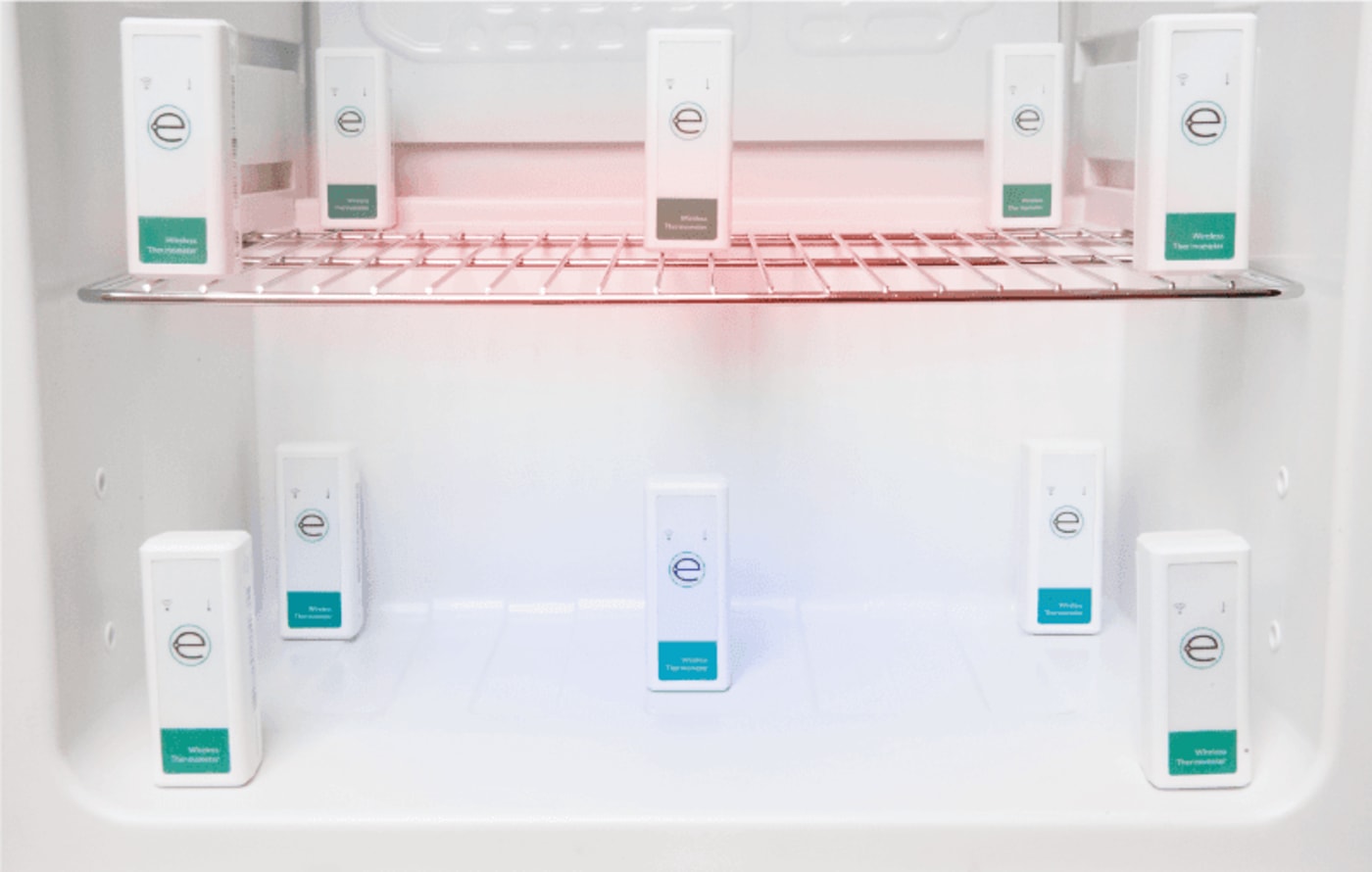
Why is the temperature fluctuating in your cooling equipment?

Jakob Konradsen

Estimated reading time: 4 minutes
Is your temperature monitoring showing temperature fluctuations? This guide explains why it happens as well as how to effectively deal with temperature fluctuations in your fridges and freezers.
The article covers:

Why does the temperature in cooling equipment fluctuate?
Temperature fluctuations are normal and occur in all cooling equipment to a greater or lesser extent.
In a freezer, for example, the temperature rises and falls due to the control that it is equipped with.
Based on the setting, the freezer will cool until it reaches a limit value. When reached the compressor turns off and the temperature rises gradually due to the ambient temperature – the temperature in the surroundings.
Temperature fluctuations are not harmful in themselves as long as the temperatures in the equipment stay within the specified limits.

6 ways to spend less time on manual temperature compliance
There are ways to make temperature compliance much simpler and less time-consuming. This guide outlines how.
What determines the extent of the temperature fluctuations?
The proportion of the temperature fluctuations depends partly on the quality of the equipment. More expensive, high-quality equipment will typically have better control and will be able to keep temperatures more constant.
Also, the number of goods in the equipment will influence stability. The more goods, and thereby thermal mass, the more constant the temperature will be.
How to make adjustments to the equipment
Although the temperature of the goods in the equipment may not be outside the specified limits, it is still advisable to adjust the equipment in a controlled manner.
The adjustment can be done by:
- moderately adjusting the cooling setting.
- waiting for a minimum of 2 hours.
- looking at what effect this had and re-adjusting if necessary.
This practice ensures that the adjustment has not been too extreme. Always check again after 1-2 days to ensure that the equipment is still set correctly.
Additionally, take note of where the temperature monitors are located in the equipment since some areas may be warmer or colder than the rest of the equipment.
Read more about temperature mapping to learn more about this.
Different types of temperature fluctuations
Some common temperature fluctuations are:
Defrosting
Some types of equipment have a built-in feature that regularly raises the temperature for a short time (typically every 6 and 24 hours). This function removes ice from the heat sink to optimize the equipment’s efficiency in terms of cooling and power consumption.
An example of defrosting recorded in the temperature monitoring system:

In the example, you see a refrigerator that runs a defrost program every 6 hours. As seen, the temperature of the equipment is raised by 1 degree for a short period of time.
Defrosting is not necessarily harmful even if it results in equipment temperatures exceeding the specified limits. It is always an assessment, but it can usually be argued that if the equipment only exceeds the specified limits in short periods, the goods usually do not get heated above the specified limits. If you use a grey-zone temperature monitoring system, it can be used to avoid alarms and deviations when the defrost program runs.
However, if the defrosting causes the temperature of the goods to exceed the specified limits to a critical level, it may be worth considering changing the settings of the equipment or introducing thermal mass as explained later in this article.
Usage patterns and equipment filling
When cooling equipment is used for general goods or general use where goods are unboxed and dispatched, temperature fluctuations may occur as shown below:

In this example, the door of the cooling equipment had stayed open for too long which resulted in an alarm from the wi-fi temperature data logger.
It is important to remember that the door can only be opened shortly, otherwise, the temperature may exceed the critical specified limits and a deviation that needs to be handled will occur.
Similarly, it may be problematic if you place too many goods in the cooling equipment. If the temperature takes a long time to restore after the goods have been placed in the equipment, it may indicate that too many goods have been stored in the equipment or that the goods have not been properly cooled beforehand.
To avoid this, it is advised to limit the number of goods in the equipment or make sure that the carrier transports the goods at the right temperature.
How can you reduce temperature fluctuations? Fortunately, it is relatively easy to limit temperature fluctuations in equipment.
You can:
- increase the thermal mass in the cooling equipment. This can be as simple as adding some bottles of water and placing them in different places in the equipment. The water will reduce temperature fluctuations even when new goods are placed in the equipment.
- make sure to have equipment that logs and sends data continuously. The best way to reduce the risk of deviations is to continuously monitor the temperature of your equipment. As seen in the above examples, logging once a day is not enough to detect fluctuations that occur several times per hour. Systems with continuous data readings are clearly preferable. If you use a manual reading system (e.g. USB data loggers) you cannot detect temperature fluctuations in time, which may have major financial and quality consequences.
Have questions?
Eupry’s automated temperature compliance solutions and support help organizations simplify and optimize the way they monitor and document temperatures. If you have any questions regarding how to secure temperature-sensitive goods, you are welcome to contact us.

Automated temperature compliance in one place
Gather temperature monitoring, mapping, and calibration in one – no gaps, no mess.